Sustainable Living Room Furniture for an Eco Friendly Home
Did you know that your living room furniture could be contributing to air pollution inside your home? Or that the air inside could be just as polluted as the air outside?
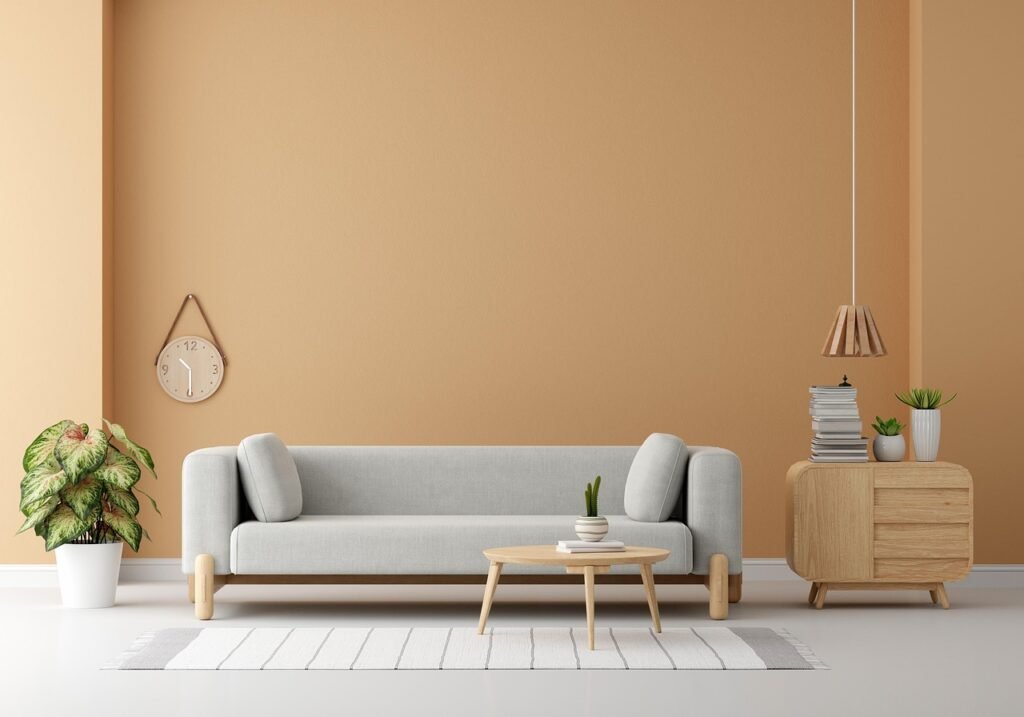
That’s right, household air pollution is a growing concern, with toxins hiding in everyday items around our homes and we are exposed to them daily. From the materials in our furniture to the paint on our walls, many household products release harmful chemicals like formaldehyde and VOCs. They contribute to many health issues especially for children who crawl around playing and touching everything.
Why do I need sustainable furniture in my living room?
Your living room is a place of sanctuary, a central hub for you and your family where you spend your days together relaxing. So naturally, you want this space to be as toxin free as possible. You want your living space decorated in a way that doesn’t put you at risk of health issues, whilst also looking sleek and stylish. You also dont want things in your home that are contributing to the depletion of the earths natural resources. We want our homes to be a sustainable living space, toxin free, so we can live a sustainable lifestyle. Read on for our eco friendly home ideas.
Best Sustainable Choices for Your Living Room
Furniture made from Sustainably Sourced Wood

Sustainably sourced wood is wood that comes from a renewable source; when the tree is cut down it is replanted so that there is minimal damage to the forests and ecosystems. It’s easy to spot if the furniture you are buying is from responsibly sourced by looking for the FSC logo. Another logo to look out for is the PEFC logo (Programme for the Endorsement of Forest Certification). These two certificates both ensure responsible and sustainable forestry.
Pine, Mango wood and Bamboo are some examples of wood that is sustainable as they grow back so quickly. Oak is less sustainable as it takes much longer to grow back but it depends on the management.
Sofas
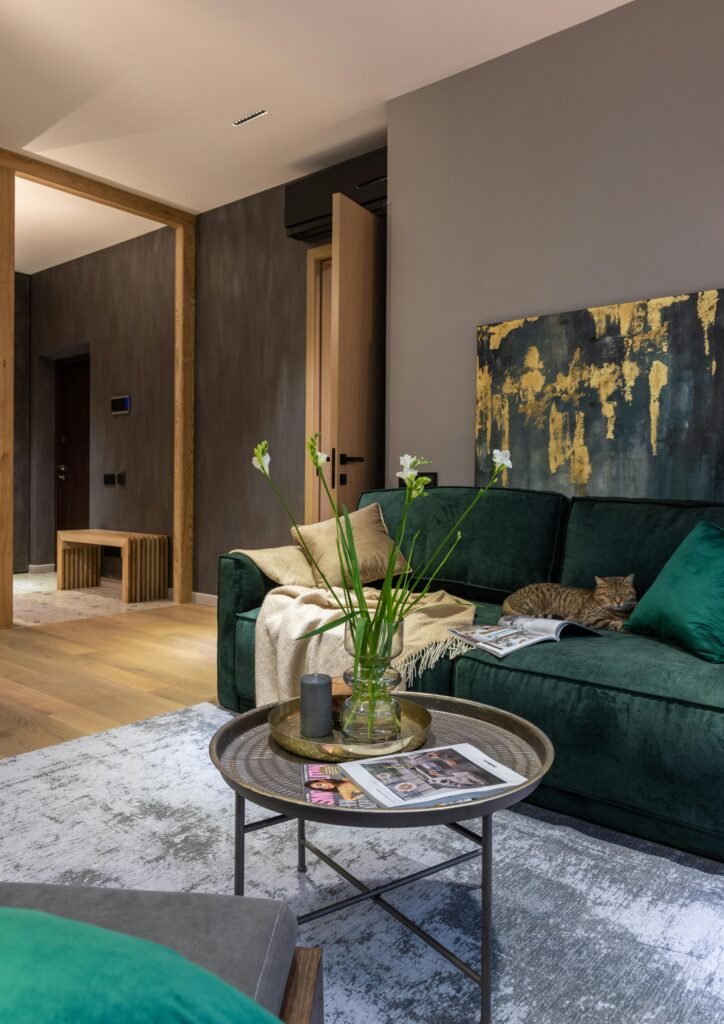
Sofas made of sustainable or reclaimed wood are an excellent choice. Organic cotton is a more natural alternative than polyester and unresponsibly sourced leather. Organic linen is also eco-friendly, and if you want a sofa with wool fibres, then look out for the Responsible Wool Standard Certification.
Dining Table
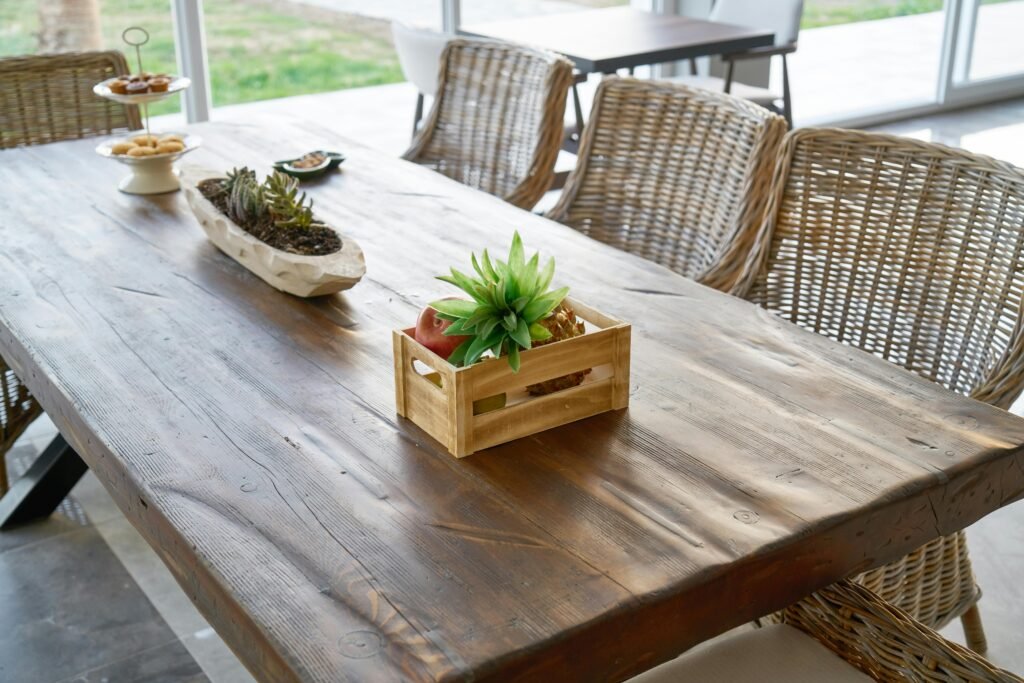
If you prefer your dining table in the kithcen, then a small coffee table is another option for your living room. It gives the room a cozy vibe and doesnt take up too much space.
Plants to brighten up the space
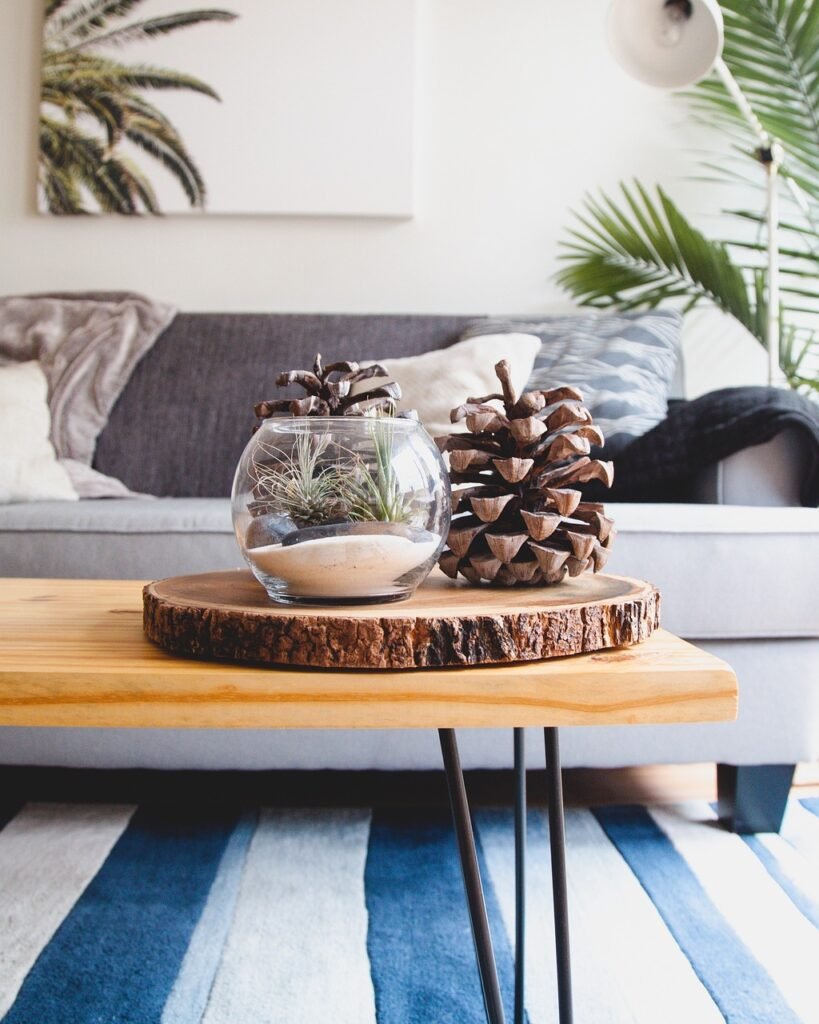
Indoor plants instantly add a touch of vibrant greenery to your living room. They are a breath of fresh air, and because they release oxygen into the air they are actually reducing the air pollution inside your home. Not only that, being around nature has positive effects on your mental health. Corner plants are popular, but the placement is entirely whatever you fancy. Get creative! You dont have to opt for green either, plants come in a variety of shapes and beautiful colours.
Volatile Organic Compounds (VOCs)
Volatile Organic Compounds (VOCs) are products that contain toxic chemicals that are released as gasses or vapours. Many paints are VOC paints and you can spot them by that ‘new paint’ smell. They release harmful vapours and put you at risk of health issues such as dizziness, headache, respiratory issues and many others.
Other household items that release VOCs are:
- Paint strippers
- Pesticides
- New furniture, beds, cabinets
- New carpets, rugs
- Cleaning products, sprays
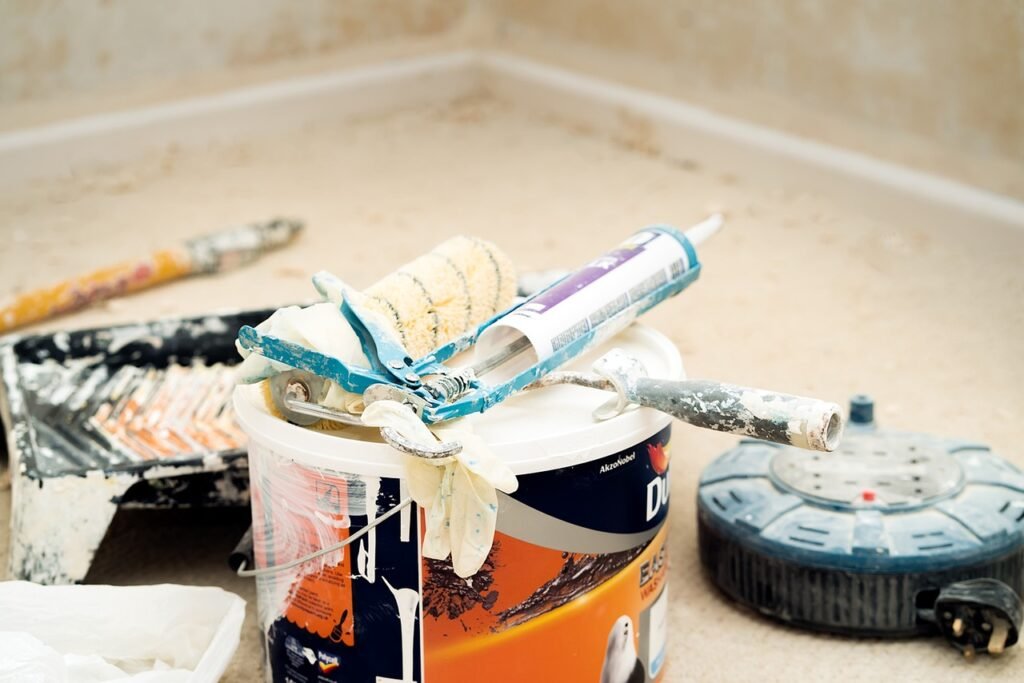
VOCs in the homes can be reduced by switching to products that have limited or zero emissions, such as Zero or Low VOC paint. Many stores will have this option available for you as awareness on this issue rises.
Other ways to reduce VOcs in the home are
- Proper ventilation – get fresh air circulating, open the windows
- Use an Air purifier – these essentially clean up the air and improve the air quality
- Don’t smoke inside- that only adds to the toxin build up that you and your family are breathing in
- Add indoor plants to your space! These look gorgeous, but also improve the air quality, making your home more green
Carpets/Rugs
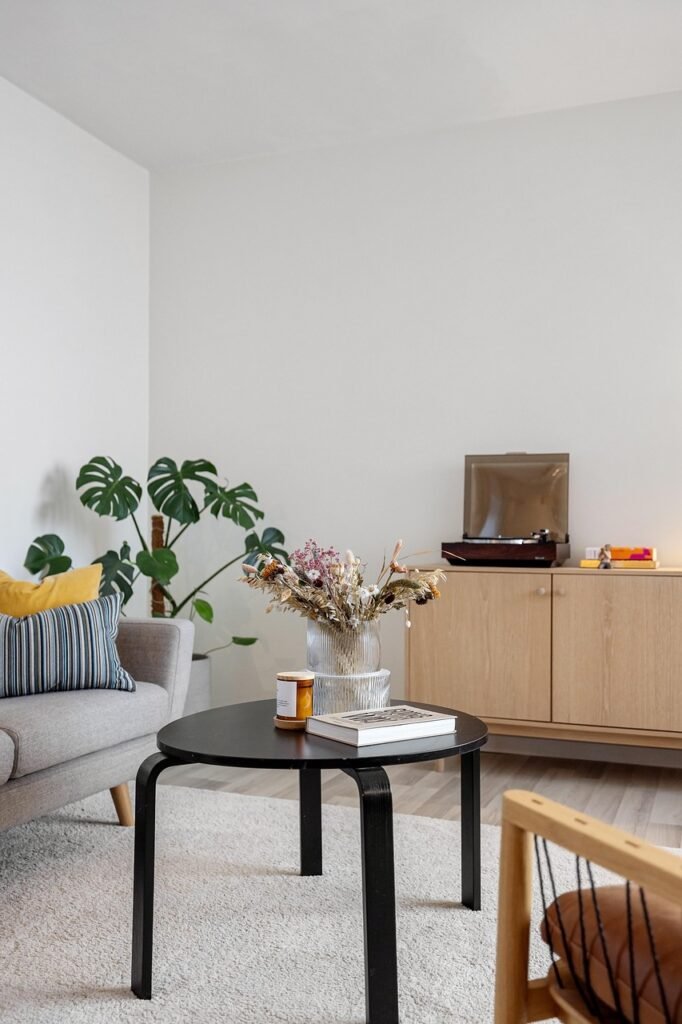
Carpets and rugs are a cosy addition to any space. However carpets can also be home to toxic chemicals or VOCs, as well as trap dust, pollen, allergens and pollutants. Vacuuming regularly with windows open can help to minimise the risk. Your vacuum should have a HEPA filter.
Other options are:
- Opt for hard-surfaced flooring. Go carpet free.
- Before installing your carpet, request that it be unrolled and dried out in a well ventilated space.
- If you have a rug, vacuum both sides.
- Deep clean your carpet or rug annually using dry steam cleaning.
- Leave shoes at the door!

Another option is to go natural with your carpet/rug choice. There are a variety of natural materials that can be used to make carpets, such as seagrass, wool, sisal (plant derived), coir (from coconut shells) and jute ( plant derived).
Energy Efficient Lighting

Over the years lighting has evolved from simple light bulbs on the ceiling to stylish home decor, with countless designs and colours available on the market. While shopping to make our homes aesthetic we must also look out for the most sustainable options available.
There are 2 main types of energy efficient light available:
LEDs – Light Emitting Diodes
CFLs – Compact Fluorescent Lamps
LEDs are more energy efficient than CFLs and are more commonly used and adaptable. Making this simple and easy swap will not only make your home more eco friendly, it will also save you money on your electricity bill.
How to shop for a sustainable living room
Here’s a handy checklist that will help you make sustainable choices whilst out shopping for your home:
Look out for the sustainability logos on your products: e.g. FSC, B Corp, Rainforest Alliance
Pay attention to the materials: Look for recycled, renewable, or biodegradable materials, e.g. FSC certified wood, bamboo, organic cotton, for more information check out our other article on Sustainability Certifications
Durability: Choose materials that last longer to reduce waste
Check the packaging: Go for plastic-free or compostable packagaing
Buy local if you can: Support local businesses and reduce carbon emissions from shopping
Do some research on the brand: Check their sustainability practices and policy
Ask yourself: Do I really need this? Conscious shopping helps reduce unnecessary buying and reduces wastage
